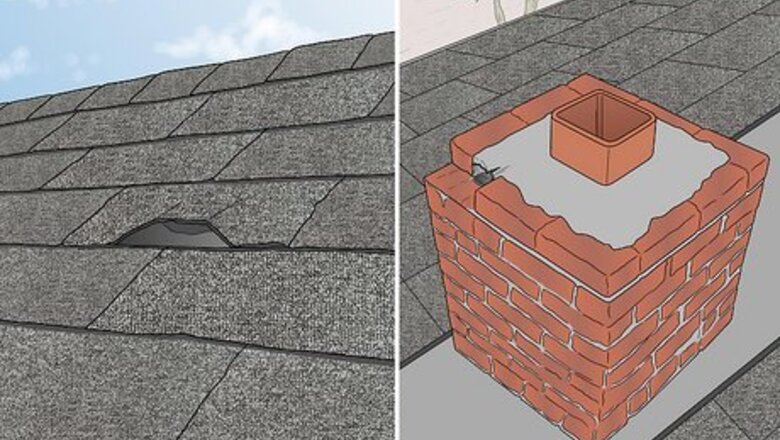
views
Blocking Entry
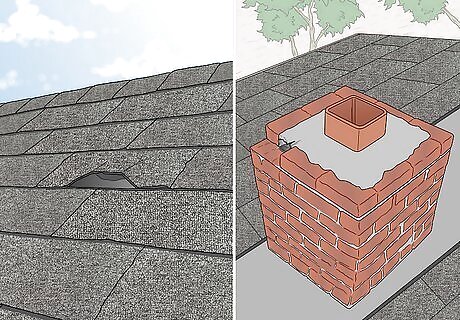
Inspect the exterior of your home. Most animals enter attics through small holes or man-made openings such as vents and chimney pipes. Larger animals will even bite and claw through weak spots in the exterior to create an entrance to the attic. The most effective way to keep animals out of your attic is to walk the perimeter of your home and find and eliminate any vulnerable areas in your home's exterior.
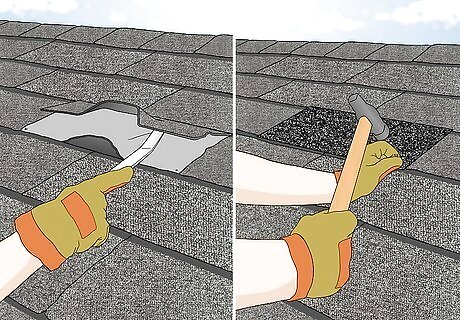
Fix holes in your roof. Look for any holes in the roofing or between the roof and the siding or brick. Lift up the damaged shingle and the ones surrounding it. Remove the nails that are underneath with a pry bar then slide the damaged shingles out. After patching the hole in the roof, replace the shingles with new ones, hammer the nails back in, and secure everything by covering the nail heads in roof cement. Keep in mind that even small holes can be a potential problem because squirrels can fit through holes 1.5 inches (3.8 cm) in diameter, and bats can get through gaps as small as .38 inches (.95 cm).
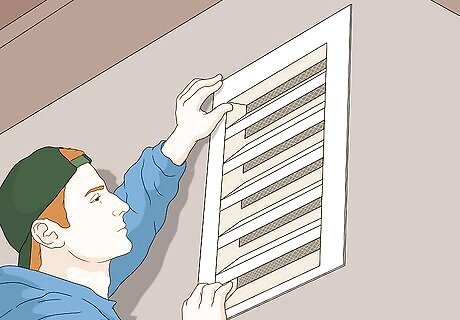
Install vent covers. Get ½ inch (1.27 cm) or ¼ (0.64 cm) inch hardware cloth from a box or hardware store. Make sure that the hardware cloth is made of wire, not mesh. Securely fasten the cloth over any vents on the roof that may provide access to the attic. Don’t forget to install covers on your soffit vents as well. Your soffit vents are located on the underside part of the roof that hangs over the sides of your home.

Install a chimney cap. First, inspect the chimney with a flashlight and look for any signs of animal inhabitation. Once you’re sure there are no longer animals inside the chimney, install an animal-proof chimney cap that will allow smoke to escape without giving animals an entrance.

Trim or remove tree limbs and branches. If you have trees that extend over your roof, you may want to trim back the branches to restrict access to the roof. Remove larger branches with a pruning saw or chain saw. Make sure that you trim any branches that are within 8 feet of your home to keep squirrels from being able to jump to the roof.
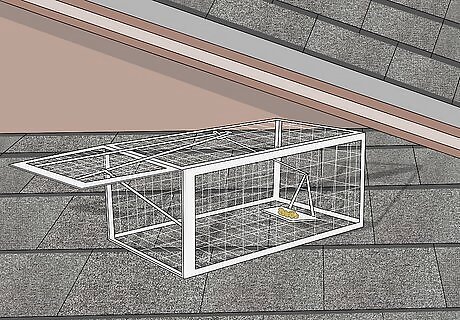
Set up traps for the animals in your attic. There are many ways that you can trap animals, but if they're legal in your area, live catch and release traps are the best because they’re humane and they’re available in a wide range of sizes. Set up the traps with a desirable piece of food and the animals will be drawn to it. If there’s an opening somewhere, doing this will give you an idea about where it is and keep animals from getting into your home until you can find and fix the opening. Make sure to check your traps at least every 24 hours to keep any trapped animals from dying of thirst or starvation. You can then either release the animal into your yard or contact a wildlife rescue or animal control to remove it for you. Do not take the animal somewhere else and release it—this is illegal in most places.
Deterring Animals

Remove food sources. You can help make your attic less inviting by removing easily accessible food sources from the exterior of your home and your yard. Keep your trash cans secured, avoid keeping any pet food accessible outside, and pick up any fruit or nuts that have fallen from trees in your yard.

Skip the mothballs, ammonia, and noise machines. Contrary to what many think, these methods won’t get rid of animals living in your attic or keep them away, especially raccoons and mice. Additionally, mothballs are carcinogens that can cause a potentially harmful environment for humans when not handled properly.
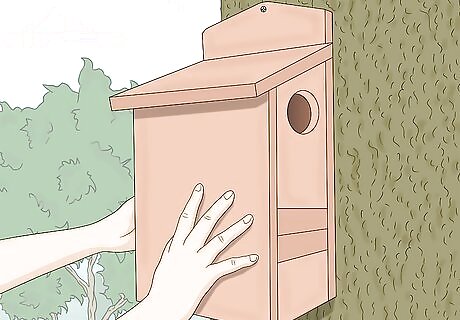
Put up a squirrel nesting box on your property. It may be impossible to eliminate squirrels from your property, especially if you live in a wooded area or value your trees, but you can provide a comfy alternative to your attic in hopes that they choose the nest that’s easier to reach.

















Comments
0 comment